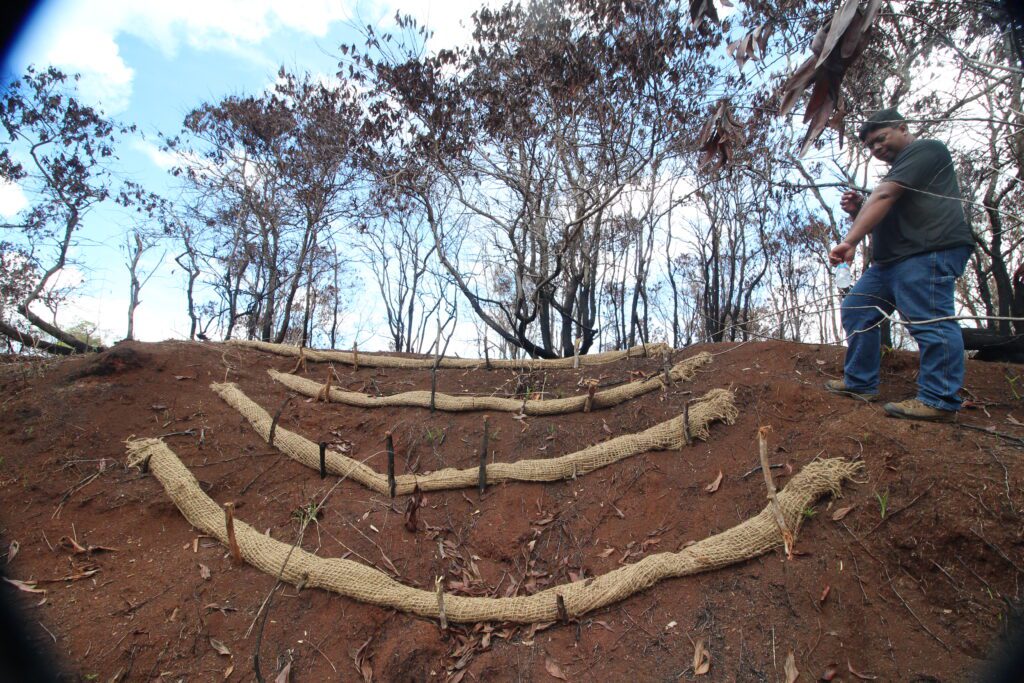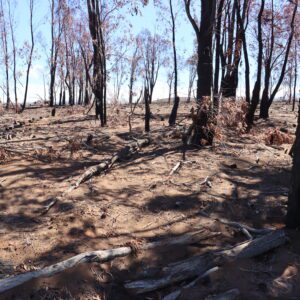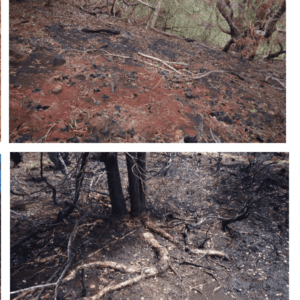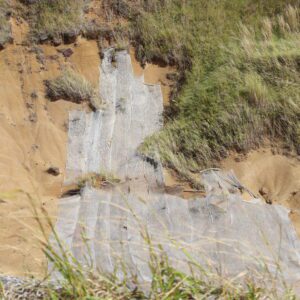After human health and safety, the first priority is to protect the soils from rain and run-off. In the immediate aftermath of a fire, engineering remedies such as fabrics, wattles, check dams, etc. will help stabilize soil. Restoring vegetation is a long-term remedy but takes months to take effect, while engineering solutions have an immediate effect. According to U.S. Forest Service research, mulching with wood chips is an effective, short-term solution but may be difficult to apply over large areas. Fallen plant debris can also be spread across burned areas to provide some protection. In sections that burned very hot, a water repellent layer may form on the top of the soil. This can be tested easily by pouring water onto burned soils: if the water pools on the surface, then it is considered hydrophobic (water will not penetrate). In these areas, nutrient availability (like phosphorus) for the successful growing of plants may also be affected after fire.





